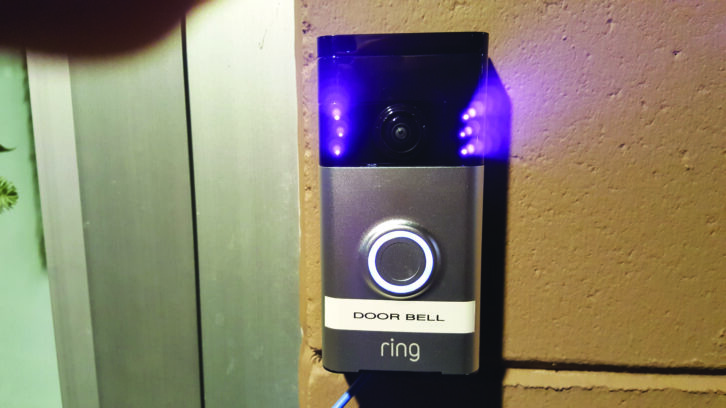
The reach of Radio World amazes me sometimes.
Chuck Cooper is a project engineer with Pinnacle Communications Ltd. Based in Abuja, Nigeria, in west Africa, Chuck writes he has been a Workbench fan for years, using many of the tips at the stations he maintains. Pinnacle does planning, implementing, procuring, installing, maintaining and repair of broadcast stations — both TV and radio, including studios. Most of their sites are located in rural, isolated areas.
Chuck read about Ron Wilken’s experience dealing with mice in his generators (Jan. 6 issue). As we know, rodents will get into all kinds of different equipment. Chuck says Ron was lucky that the mice were only nesting. Nigerian mice have a tendency to eat cables that are lying around for lunch and dinner. When they get into the middle of a transmitter, usually with lots of ribbon cables, they can cause real havoc and put the equipment off the air quickly.
It can sometimes take hours or days to find these chewed up cables because the mice have a tendency to chew on the cables that are tied down and normally unobservable, like in a deep dark corner of the cabinetry. And African rats, mice and even lizards are really hungry. They seem to prefer colored ribbon cables, although they’ll chew up the grey ones, too.
Worse yet, their presence brings in the snakes, most of which are poisonous, like the black mamba. It can be a real rush to open a cabinet door and find a well-fed snake looking at you.
Chuck and his team have tried a variety of methods to keep these little devils out, and the best thing that Chuck has come up with is charcoal … yes, charcoal.
The solution is easy. They simply put some in an old sock or two and place them strategically around the equipment rooms and inside racks, cabinets and generator shacks. Chuck writes that the little devils smell the charcoal and think that the building is on fire or burnt down, so they run for their worthless little lives, far away from the buildings. Now the challenge! You don’t believe Chuck? Try it.
Chuck’s company oversees 36 sites in west Africa and has eliminated rodent problems since doing this. The locals use the same trick to keep rodents out of their homes and have been doing so for years.
It pays to keep one’s eyes and ears open when in a country with unfamiliar situations and customs — you might learn something. Give it a try and let me know your results.
Ring Ring … Who’s There?
Salem Media’s Twin Cities cluster is chiefed by Steve Smit. Steve has taken advantage of Ring.com’s Video Doorbell.
The doorbell, pictured in Fig. 1, provides wide-angle HD video and includes motion detection and cloud recording. For late-night and weekend operators, this camera provides peace of mind. The video doorbell lists for $199.
Not only does the video doorbell assist operators inside the station, the system can trigger instant mobile alerts on your smartphone. Find out more at www.ring.com.

Jingle Jingle Dongle
In our Dec. 16 column, Reid Fletcher at the University of Wyoming told about his use of the DVB-T TV Software-Defined Radio dongle. The RTL-SDR is a cheap software-defined radio that uses a DVB-T TV tuner dongle. Because signal I/Q data can be accessed, the DVB-T TV tuner can be used as a wideband software defined radio, using a software driver.
For broadcast engineers, this means a cheap $20 TV tuner USB dongle can be used as a computer-based radio scanner. You can find a variety of software-defined radios, but they cost more.
New Hampshire Public Radio’s Steven Donnell loves his R820T dongle and keeps one in his laptop bag, as well as one at home. Steven writes that besides using the dongle as a simple spectrum analyzer, it is a quick way to check basic ID on an FM RDS signal.
There are RF up-converters available that you can build or purchase that extend the frequency range down to HF. Here are two handy links to get you started with books on the subject. Both are available on Amazon. In the search block, enter “Radio on a Tight Budget” for an e-book by Akos Czermann. It costs just $4. For a soft-bound reference, search “The Hobbyist’s Guide to RTL SDR” by Carl Laufer at the same site. This book is under $20.
An Alternate Diagnostic Tool
Broadcast engineer Art Hadley writes that although there are cheap Chinese inspection cameras, he’s found several that are cheaper and better. Search for “Android endoscope” at www.banggood.com. You’ll see a 6-LED endoscope with a 7 mm lens for around $20. The waterproof bore scope tube camera comes in 1 m and 3.5 m lengths.
Fifty-eight percent of the reviewers gave it five stars; one reviewer couldn’t read the QR code to get the app, but found a compatible app at the Google Play Store called “Wirecam” by Netween.
Just plug the camera into the micro USB socket and the six LEDs illuminate. Start up the app, search for the camera and the image appears on the smartphone screen. For the price, it could be a neat diagnostic tool.
Art says he loves this site, and he suggests you search for laser fog lights while you’re there.
Shirts Galore
And we’ll wrap up this column with a gift for the engineer who has everything.
Gregory Muir of Wolfram Engineering in Great Falls, Mont., sends a note about a vendor of shirts that allow engineers to advertise their value to management. A typical one reads: “Never, but Never Question the Engineer’s Judgement” and “Chief Engineer: Because Badass Miracle Worker Is Not an Official Job Title.” You can find a wide selection of engineering-related shirts by searching that term at www.sunfrog.com and www.redbubble.com.
Click on the shirt to toggle through product pictures!
Contribute to Workbench. You’ll help your fellow engineers and qualify for SBE recertification credit. Send Workbench tips to [email protected]. Fax to (603) 472-4944.
















